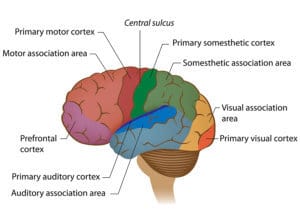A lucid dream refers to a dream in which the dreamer is aware that they are dreaming. Sometimes this means that they can control what happens in the dream, but simply being aware of being in a dream counts as lucid dreaming. Studies show that around 55% of people have experienced one or more lucid dreams in their lifetime. More regular lucid dreaming is much rarer. In fact, only 23% of people have a lucid dream at least once a month. However, it is possible to learn to take control of your dreams and there are even health benefits, as well as risks, associated with lucid dreaming.
What is a Lucid Dream?
Being aware of the fact that you are dreaming is the main definition of lucid dreaming. People have been fascinated by these dreams and began studying them thousands of years ago. According to Paul Tholey, a German psychologist, a dream must fulfil seven different conditions to be considered lucid. These include awareness of self, the dream state, capacity to make decisions, memory functions, the dream environment, the meaning of the dream, and concentration as well as focus reflected by a certain clarity.
Later, in 1992, Deirdre Barrett, author and psychologist at Harvard Medical School, examined lucid dreams to see if they contained the four corollaries of lucidity. These include whether the dreamer is aware that they are dreaming, whether objects disappear after waking, whether physical laws apply in the dream, and whether the dreamer has a clear memory of the waking world. Lucid dreams have fascinated other psychologists as well. Further developments in psychological research have even pointed to ways in which lucid dreaming could potentially be utilized as a form of sleep therapy.
History of Studying Lucid Dreams
Cultivating the ability to be cognitively aware during a dream is central to Yoga nidra, an ancient Hindu practice, and dream yoga practiced by Tibetan Buddhists. It was also referenced in ancient Greek writing by philosophers such as Aristotle. Others, such as Galen of Pergamon, a surgeon and philosopher in the Roman Empire, actively used lucid dreams as a form of dream therapy.

Even the ancient Egyptians seem to have been interested in exploring the meaning behind dreams and they believed that people had three bodies: the corpse body, the living physical body and the soul defined as an individual in an out-of-body state. Some believe that this could be a reference to our state in lucid dreaming.
More recently, sleep was studied on a more scientific level. In 1729, Jean-Jacques d’Ortous de Mairan, a French geophysicist, identified biological rhythms by conducting a circadian experiment. The human circadian rhythm is a 24-hour cycle driven by our biochemical, physiological, and behavioral processes. This biological clock results in certain commonalities among humans as a species. The conclusion shows that we enter our deepest sleep around 02:00 and we have the lowest body temperature around 04:30. Proof of our biological clock being consistent can be seen when it resynchronizes itself if we cross time zones.
Sigmund Freud was loved by some and hated by others, but his research on dreams changed the way we perceive them today. Freud revolutionized the way we think of ourselves and theorized that we have many hidden desires that make themselves known in our dreams. He firmly believed that our minds are full of hidden desires and memories. According to Freud, our dreams hold groundbreaking psychological insights about ourselves. It was his research that led scientists to pursue studying the physiology of sleep, measuring brain waves and linking rapid eye movement (REM) patterns to different dream stages.
Health Benefits of Lucid Dreaming

It isn’t certain that everyone is able to lucid dream. In fact, the brains of people who do are a little different physically than those of people who do not. The prefrontal cortex, or the front part of the brain, is the site of high-level tasks like making decisions and recalling memories. People who have lucid dreams have a bigger cortex, suggesting that people who are more self-reflective tend to be more likely to have lucid dreams.
Those lucky individuals who do experience lucid dreams can enjoy perks such as less anxiety, better motor skills, improved problem-solving and more creativity. Basically, having a lucid dream can have impacts on you once you wake as well. Being aware that you are dreaming can result in you controlling the dream. This sense of control can help you feel empowered throughout your waking day as well. People who struggle with nightmares also benefit from being able to turn their bad dreams into positive ones.
Some other studies go as far to suggest that lucid dreaming leads to better motor skills. Basically, you can practice real life motor skills in your dreams. The hypothesis is that your brain is activated when imagining doing certain movements the same way it is when you are doing said movements. Therefore, lucid dreamers could actually train motor functions while you sleep.
Problem-solving is another important real-life skill that can be practiced while we snooze. Check out Youth Time article on How To Solve Problems In Controlled Dreams. Researchers found solid evidence to indicate that lucid dreams can help people practice and learn to solve problems more creatively. Speaking of creativity, lucid dreams have led to some people coming up with new ideas and insights with the help of characters in their dreams. It’s like brainstorming with a group of people, except they are all actually parts of your subconscious.
How to Learn to Lucid Dream

Even though certain people are more likely to experience lucid dreams, there are ways that everyone can learn to gain awareness in their dreams. One of the easiest first steps is to start a dream journal. Writing down your dreams forces you to remember what happens during each dream. It helps you learn what your dream signs are and it enhances awareness of dreams in general. It is best to log dreams first thing in the morning right after you wake up and read the journal often.
Practicing reality testing is another big thing that can help you begin lucid dreaming more. Studies show that your levels of consciousness are similar when you dream to when you are awake. This means that increasing awareness during your waking state can enhance your awareness during your dreaming state. This can be done by doing some reality testing. Basically, it trains your mind to recognize your own awareness while you are away.
Reality testing is a method that involves doing reality checks throughout the day. Once it becomes a habit, it will be possible for you to do it while dreaming as well. Some popular reality checks include but are not limited to pushing your fingers against your opposite palm, looking consciously into a mirror, pinching your nose, and looking at your tattoos if you have them.The theory is that in a dream, your fingers will pass though your palm, your reflection will look different, you’ll be able to breathe with a pinched nose and your tattoos will not look like they do in real life.
There are also various induction techniques that can help you get into a lucid dreaming state. A popular technique involves waking up five hours after bedtime. This amount of time will make it more likely for you to enter REM sleep while still conscious. Simply telling yourself that you will lucid dream before going to bed or before going back to bed after waking up can also help it become reality. A more complicated way is to induce a hypnagogic hallucination by laying down and entering REM sleep from wakefulness while maintaining your consciousness.
While all of these techniques seem silly or difficult, all things take practice to master. If you are serious about learning to lucid dream, take notes and potentially set reminders on your phone. Once you get into a habit of writing down your dreams, re-reading your journal, doing reality testing and experimenting with these other methods on a regular method, you’ll be one step closer to lucid dreaming. There are also devices online that claim to help with this. These include sleeping masks that flash lights and certain music that you can play while you sleep.
Is Lucid Dreaming Safe?

Before you get excited about dedicating your life to attempting to master lucid dreaming, you should learn about the possible consequences. It is definitely an old wives’ tale that if you die in your sleep, you die in real life. However, lucid dreaming may have a few undesirable effects. It turns out that you are more likely to wake up during a vivid lucid dream and have trouble going back to sleep. Being obsessed with trying to lucid dream can give you insomnia and lower your sleep quality in general.
If you suffer from mental health disorders or if they run in your family, lucid dreaming can bring out some scary side effects. They can cause confusion, delirium and even hallucinations. Blurring the line between what is real and what is a dream can be problematic if you already suffer from mental health disorders such as schizophrenia but also other conditions. Also, using some of the devices that claim to help with lucid dreaming could also cause some health problems. It is important to consult a doctor and/or psychologist before attempting to influence your sleep if you have even the slightest reason for concern. No imagined dream is worth suffering in the real world.
Photos: Shutterstock
More articles related to dreams and dreaming!
Support us!
All your donations will be used to pay the magazine’s journalists and to support the ongoing costs of maintaining the site.
Share this post
Interested in co-operating with us?
We are open to co-operation from writers and businesses alike. You can reach us on our email at cooperations@youthtimemag.com/magazine@youthtimemag.com and we will get back to you as quick as we can.










